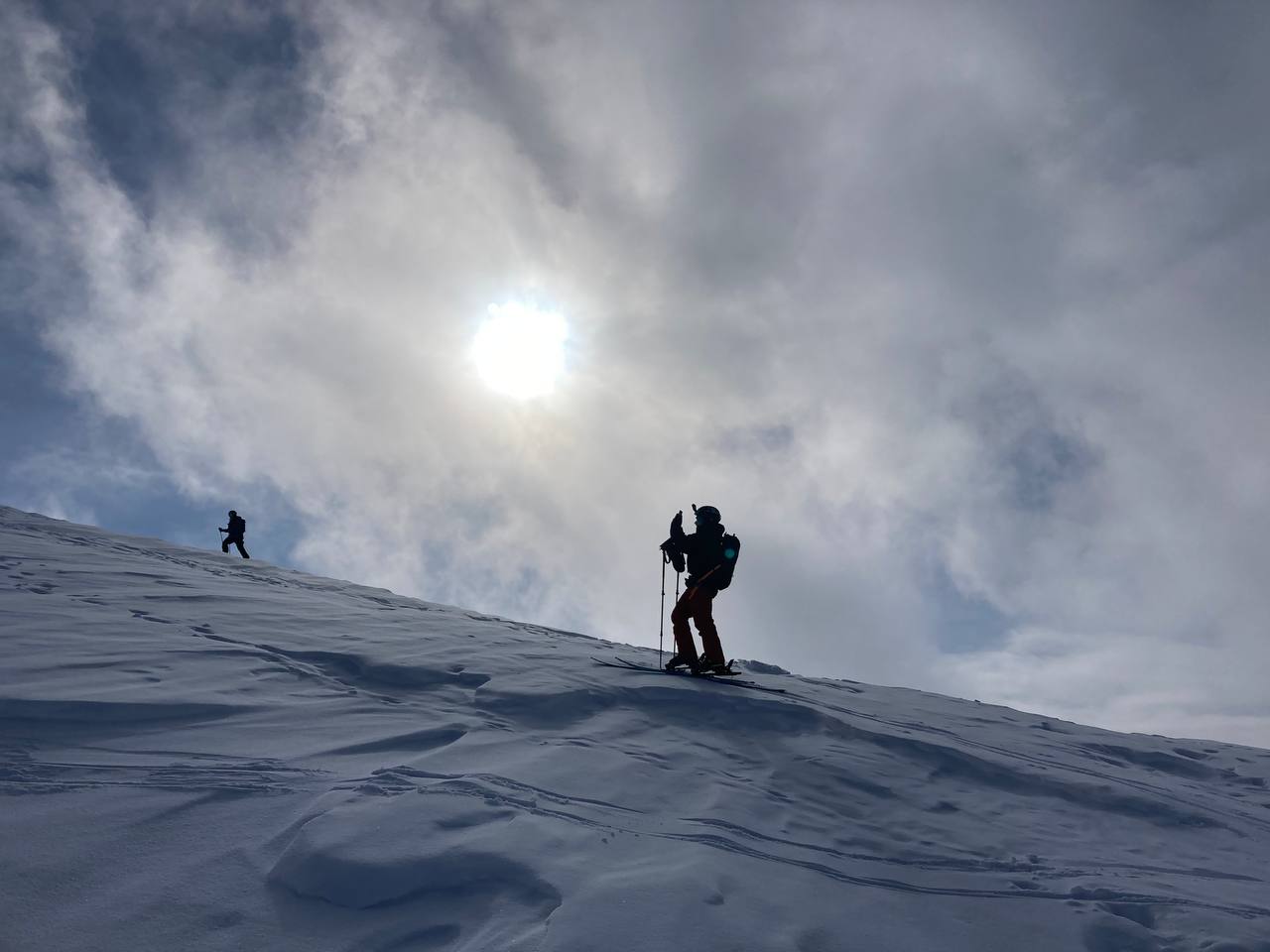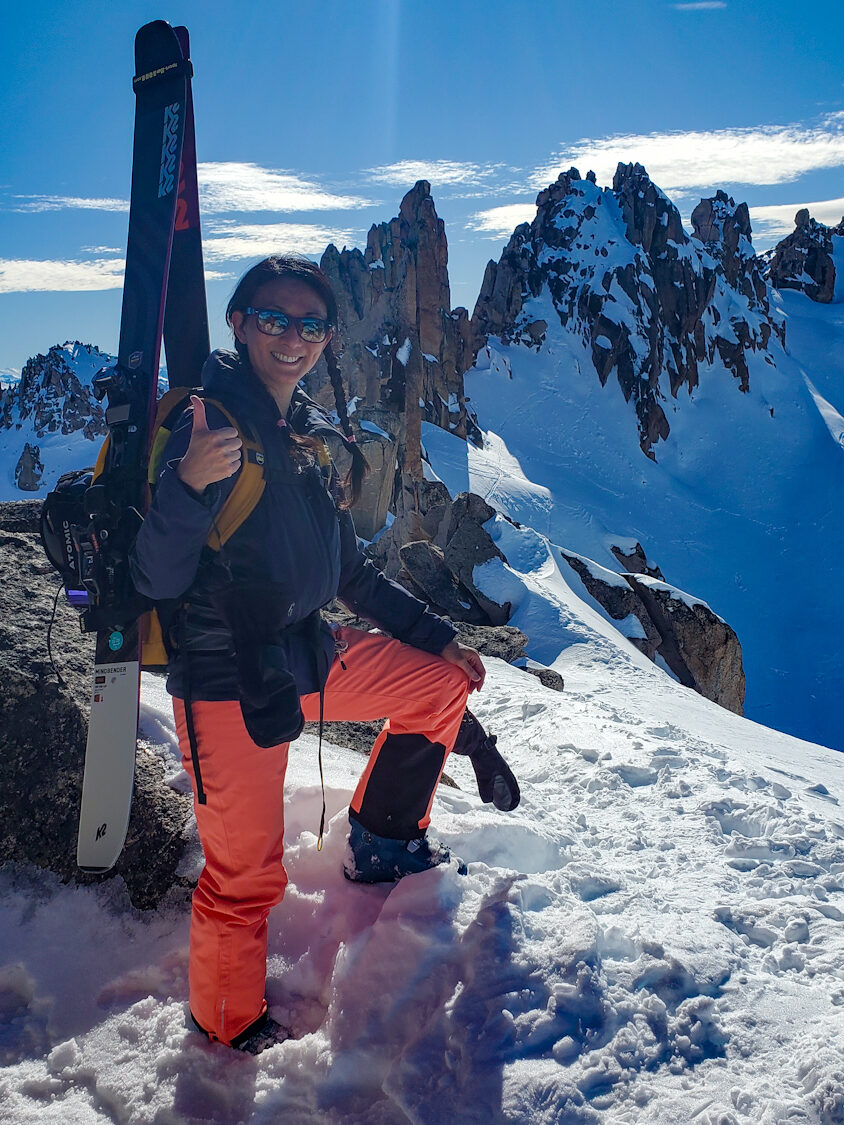In this post, I’ll guide you through how to learn to ski off-piste, focusing on the transition from on-piste to off-piste skiing. You’ll find videos packed with useful drills to help you get started and elevate your skills.
Skiing off-piste, also known as freeriding or backcountry skiing, is the ultimate buzz for thrill-seekers looking to ditch the groomed trails. But with this freedom comes increased risks and challenges that demand proper prep and skills.
Keep an eye on our Adventure Group Ski Trips to kickstart your off-piste journey!
Understanding the Differences in Off-Piste Skiing
Terrain and Conditions in Learning to Ski Off-Piste
Learning to ski off-piste means leaving the groomed trails and tackling unmarked, unpatrolled areas with varying snow conditions and terrains. This requires a different approach and mindset. Off-piste terrain throws powder, crust, hardpack, and sometimes even ice at you, demanding versatile technique to handle these variations. The global demand for off-piste skiing has exploded by 15% annually over the past decade, showcasing the sport’s booming popularity.
Equipment Needed to Learn to Ski Off-Piste
Learning to ski off-piste requires specific gear:
- Wider Skis: Designed for powder, they provide better flotation and stability. Experienced off-piste shredders tend to prefer skis that are at least 100mm wide underfoot.
- Safety Gear: Essential items include an avalanche transceiver, shovel, and probe. It’s worth noting that a large percentage of avalanche survivors were found with the help of transceivers.
- Proper Clothing: Layering is crucial to manage varying weather conditions.
Skills and Techniques to Learn to Ski Off-Piste
Centering and Balance
One of the most crucial techniques in learning to ski off-piste is maintaining your center of balance. Unlike on groomed trails, off-piste terrain is uneven and unpredictable. Keep your weight centered on the ski, with equal pressure on your toes and heels. This helps maintain balance and control.
Most off-piste newbies, and even some seasoned freeriders, tend to lean back too much. This habit dates back to the 80s and 90s when skiers had to lean back to prevent their ski tips from getting buried in deep snow. Modern skis are designed to float better, making this technique unnecessary. The other reason for leaning back is fear—newbies often lack the guts to attack the mountain head-on. But leaning back reduces control and increases the risk of bailing. Attacking the mountain with a forward stance is essential for maintaining stability and making smooth turns.
Below is a video with some useful drills to get you transitioning from on-piste to off-piste with centering technique:
Pole Plants
Using blocking pole plants is essential for controlling your descent on steep slopes. This technique helps keep your upper body stable while you turn, which is critical for maintaining control on variable terrain. Statistics from off-piste training schools show that a significant percentage of new skiers improve their stability by practicing proper pole planting techniques.
Below is one of the more useful videos about pole plants that I’ve found:
Advanced Turns
Nailing jump turns and kick turns is key for shredding narrow chutes and gnarly steeps. Precision and timing are everything when it comes to safe and smooth off-piste runs. One common rookie mistake is locking their boots too tight, limiting ankle flex. Check out the video below for essential tips and drills on mastering jump turns. Get some reps in on-piste to boost your confidence and skills. According to a Freeride World Tour survey, many beginner off-piste skiers found advanced turning techniques to be the toughest skill to conquer.
Building Physical Fitness to Learn to Ski Off-Piste
Learning to ski off-piste is more physically demanding than on-piste skiing. Ensure you are in good shape, focusing on core strength and endurance to handle the variable conditions and terrain. Regular cardio, strength training, and flexibility routines can significantly improve your off-piste performance. Studies have shown that skiers who engage in pre-season conditioning programs can significantly reduce their injury risk.
Avalanche Safety and Weather Conditions
Understanding avalanche safety is paramount when learning to ski off-piste. Take an avalanche safety course to learn how to use avalanche transceivers, shovels, and probes. Always be aware of weather conditions and potential hazards. Checking weather forecasts and avalanche conditions regularly and being prepared to change plans if conditions are sketchy is critical. Proper avalanche training and equipment can greatly enhance your safety in the backcountry
My Personal Experience with Learning to Ski Off-Piste
Discovering the Thrill of Off-Piste Skiing
My journey to learn to ski off-piste began in Niseko, Japan, which was a hidden gem back then but has since become Japan’s most prominent ski resort. Today, Niseko is renowned for its powder snow, attracting skiers from around the world. But back when I started my off-piste journey, there were hardly any people going off-piste, and I had the whole pow stashes to myself. It was the absolute dream.
The reason why I went there was a short article in the Financial Times’ magazine called “How to Spend it” that wrote about this secret tip of the best pow in Japan. Only a few years after my first visit to Niseko, the place started to explode—it was the era when social media took off and made Niseko the pow mecca of the world.
Learning the Hard Way
It wasn’t until I ventured off-piste in other regions that I realized how unique Niseko’s powder was. In regions with heavier snow, I discovered that much more technique is required to navigate effectively. The ease with which I had skied in Niseko’s powder had given me a false sense of my abilities. Looking back, I realize how naive I was about the potential dangers. The patrol-controlled gates and the ease of skiing in the powder gave me a false sense of security. I hadn’t given a second thought to safety equipment—no avalanche beacon, no probe, no shovel. Back then, it wasn’t required, and in my excitement, I hadn’t considered the risks.
Tips for Beginners Who Learn to Ski Off-Piste
If you’re considering your first off-piste adventure, here are some tips to ensure you have a safe and rad experience:
Start Small
Begin with side-country areas close to marked runs before venturing further. This allows you to gradually acclimate to the conditions of off-piste skiing while staying within reach of familiar terrain. My advice is to start off-piste skiing by venturing beside the pistes where it is reasonably safe. From there, gradually venture farther into the backcountry. When you reach a point where you are so far in the backcountry that it becomes necessary to climb in some parts, it is time to learn skinning.
Invest in Proper Gear
Wide skis or a powder-specific snowboard will make your experience much more enjoyable. Ensure all your equipment is in good condition and appropriate for off-piste skiing. Using equipment specifically designed for off-piste conditions can reduce equipment-related issues and enhance your skiing experience. Check out our Gear Reviews for pro recommendations.
Take a Course
Many resorts offer introductory off-piste courses. These can be invaluable for learning technique and safety. Knowledgeable instructors can provide personalized tips and guidance, helping you build confidence. Taking professional courses can significantly reduce the likelihood of accidents in off-piste environments.
Check the Conditions
Always check the weather and avalanche forecasts before heading out. Being informed about current conditions helps you make safer decisions and avoid dangerous areas. The European Avalanche Warning Services (EAWS) emphasizes that accurate weather forecasting can significantly reduce avalanche risk. Check our post about the EAWS avalanche safety standards and familiarize yourself with the apps and tools available to keep you safe off-piste.
Stay Humble
Off-piste skiing has a steep learning curve. Don’t be afraid to turn back if conditions exceed your ability. It’s better to retreat and try again another day than to push beyond your limits and risk injury. Many off-piste accidents occur when skiers overestimate their abilities.
Conclusion
Learning to ski off-piste is an exciting journey that offers unparalleled freedom and adventure. With proper preparation, gear, and respect for the mountain, you can safely explore the thrilling world of off-piste skiing. Remember, the mountain demands respect and caution. Prepare well, stay safe, and get ready for some of the most exhilarating skiing of your life!
Ready to chase your own off-piste dreams? Join one of our Adventure Ski Trips and dive into the world of untouched powder and breathtaking descents.



Leave a Reply